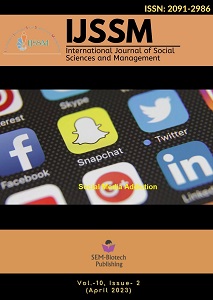Analysis of Libya’s Insecurity: The Examination of Violence in Five Libyan Cities
DOI:
https://doi.org/10.3126/ijssm.v10i2.54484Keywords:
Libyan insecurity, Post-Gaddafi challenges, Airstrikes in Libya, Instability, power-struggleAbstract
Stability remains a pursuit of the post-Gaddafi regime since no accord has achieved its aim of establishing a legitimate government in Libya. The challenges in implementing Skhirat’s agreement coupled with the government rivalry between Tripoli and Tobruk have resulted in the unabating state of insecurity in Libya. The relationship between the implementation of agreements and the complexity of the insecurity in Libya has an impact on the establishment of a legitimate government. Unlike the common analysis of Libya’s state of insecurity in Northeastern and Western dichotomy or political, economic, and social analysis, this article presents an analysis of insecurity issues using a smaller scale that reflects insecurity in different neighborhoods. The unit of insecurity, therefore, is explained based on smaller units of insecurity by examining neighborhoods in five cities, namely Benghazi, Sirte, Jurfa, Sabha, and Tripoli, which have witnessed extreme attacks in the post-Gaddafi era. The emphasis is on how the Libyan National Army under General Haftar and the Libyan Army of Government National Accord have tried to capitalize on the control of strategic neighborhoods of the cities and how this contributes to the further fragmentation of insecurity and control that determine the future of Libya.
Downloads
Downloads
Published
How to Cite
Issue
Section
License
Copyright (c) 2023 International Journal of Social Sciences and Management

This work is licensed under a Creative Commons Attribution-NonCommercial 4.0 International License.
This license enables reusers to distribute, remix, adapt, and build upon the material in any medium or format for noncommercial purposes only, and only so long as attribution is given to the creator.




